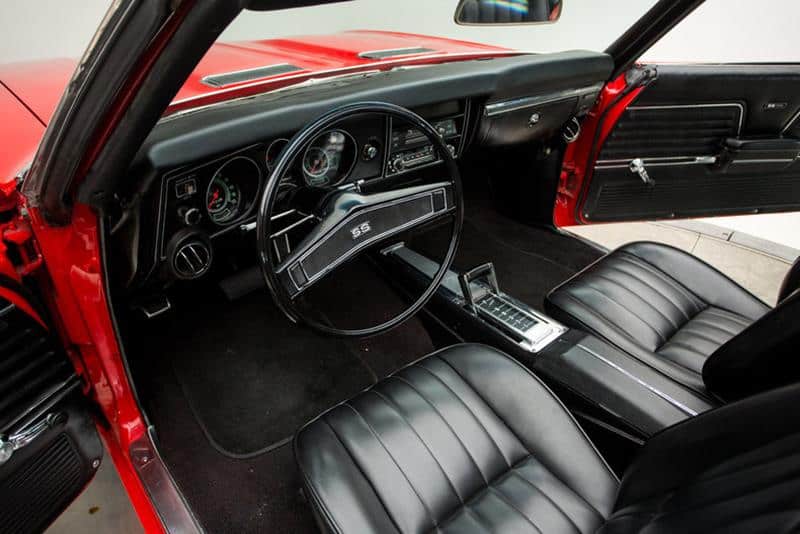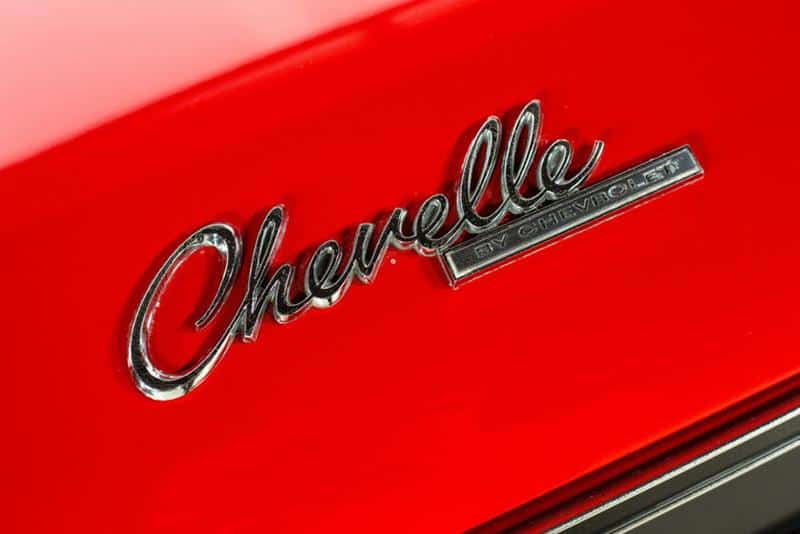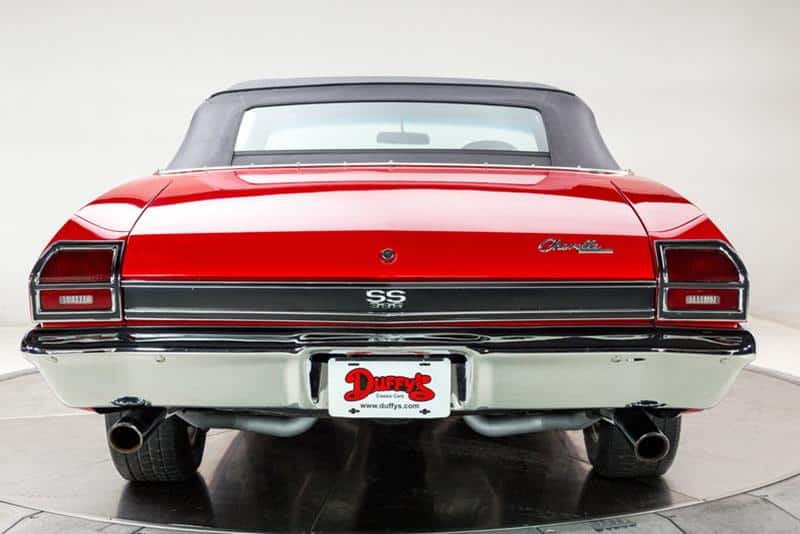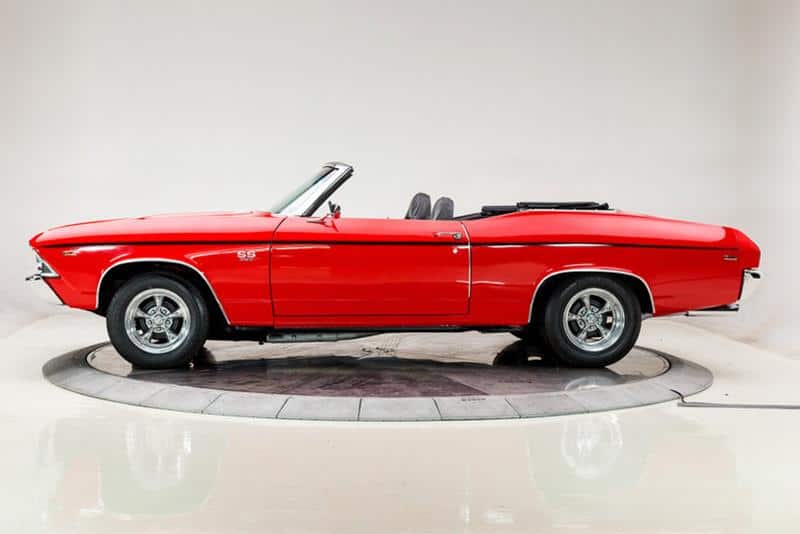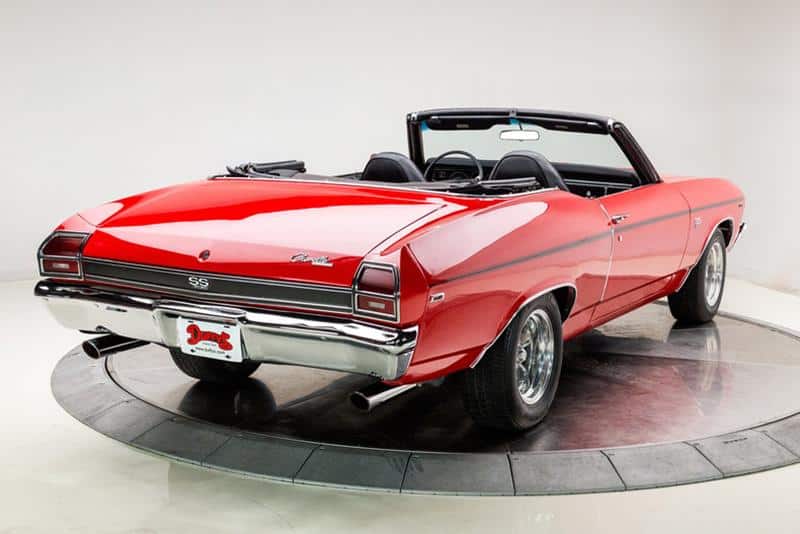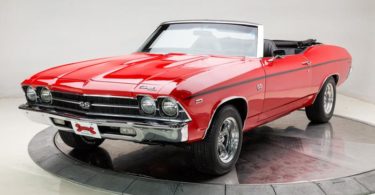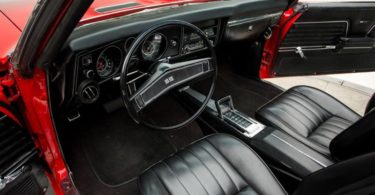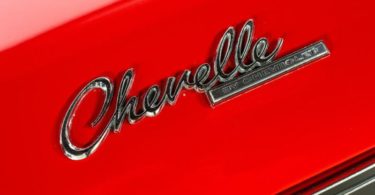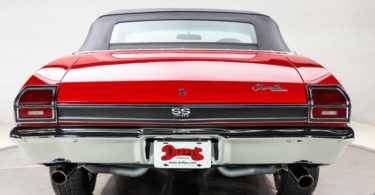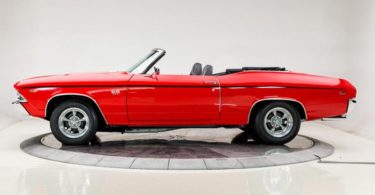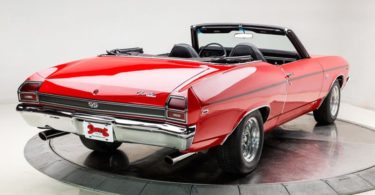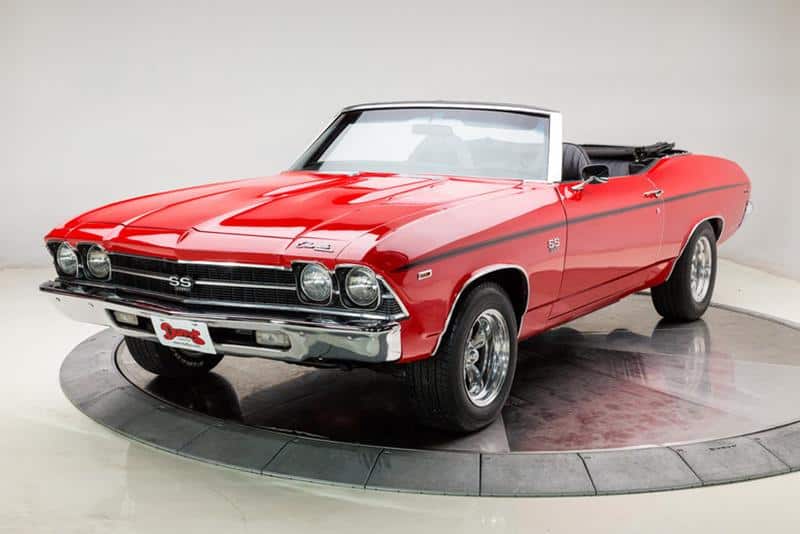
“Say it out loud. Get the feel of it. You’ll be hearing it a lot because the SS 396 equipment package is now available on all Chevelle Coupes and the Malibu Convertible” 1969 Chevelle brochure
- Touted as “America’s most popular mid-sized cars, Chevelles reached a new height of 439,600 models in production for 1969.
- Vinyl tops were made available for all coupe and sedan models.
- Since the cars were not only subdivided by their basic power units but also their various trim packages and other options, well over 300 varieties of Chevelle were available from the factory in 1969.
Muscle Car Specifications
Though exterior appearance did not change much from the 1968 Chevelle, the most drastic change in the Chevelle line for 1969 was in its series designations. The bottom-of-the-line 300 series disappeared altogether, and all wagons became sub-series. Therefore, only the 300 DeLuxe and Malibu remained as designated series for the line.
Muscle car enthusiasts may have been upset to see the additional disappearance of the SS 396 Sport Coupe as its own line, but the SS 396 became an accessory package that could be added on to any car in the Malibu series. The lengths of all models varied slightly from previous years and now had three different length categories: 4-door models were 200.9 inches, 2-door styles measured 196.9 inches wagons were 207.9 inches long.
300 DeLuxe
With the absence of the 300 series, the lowest priced Chevelle for 1969 was the 300 DeLuxe 2-door coupe, priced at $2,531. Other models available in the 300 DeLuxe line were the Sport Coupe, 4-door sedan and the Greenbrier Wagon, whose named had been taken from the recently defunct Corvair line and represented the middle-range Chevelle wagon. The Nomad wagon also remained part of the 300 DeLuxe line, a stripped down model offering the lowest price of the Chevelle wagons at $2,783.
The interior colors for the 300 DeLuxe lines were limited to black, blue or medium green for cloth-and-vinyl interiors, or an all-vinyl interior in black.
Malibu
Now that the Malibu contained even more sub-series as of the 1969 model year, its share of the whole Chevelle market jumped to an astounding 83.5 percent. Not only did the Malibu contain its usual sport sedan, sport coupe, convertible and 4-door sedan, it also represented the two Concours station wagon lines.
The Concours Estate wagon was the top of the line Chevelle wagon with wood-grain sides and standard features like a boarding step. The Concours wagon was a slightly downgraded model from its Estate sibling, still featuring all-vinyl interiors and new full-coil suspension found in all the 1969 Chevelles.
Super Sport 396
Since the SS 396 was gone as a series unto itself, it could now be added to any 2-door Chevelle for $347.60. Since this applied to the 300 DeLuxe series as well as the Malibu series, the SS 396 could be more affordable than ever. The regular SS 396 accessory package included the same 325horsepower engines as the 1968 SS 396 Sports Coupe, but could be upgraded to the 350horsepower model and, later, the 375horsepower version.
In addition to the wider variety of Chevelle’s able to include the SS 396 package, more changes to the line came late in the 1969 production year. Reportedly to meet new emissions standards, the late-1969 models were held 402 cubic inch engines, though the official name was never changed.
Additionally, as the muscle car wars were really raging at this point, there was a hankering for more power than even the highest powered factory model could deliver. Eager to find a way to circumvent GM’s power limits, Chevy’s performance-products manager used the Central Office Production Order (COPO), usually reserved for special fleet orders, to order 323 specially built Chevelles. Known as the Chevelle COPO 427, this run used the L 72 engine from the larger Chevy lines, a 427 cubic inch V-8. Chevy rated the horsepower for the COPO Chevelles at 425. Of those produced, 99 went to the dealership owned by Don Yenko, a retired race car driver long known for ordering and selling high-powered Camaros and Novas.
Muscle Car Competition
Though the 1969 Chevelles, even with the SS 396 package, were as powerful as they had been for the previous few years, muscle car enthusiasts were demanding even more power. This is evidenced by the late-run COPO 427’s. 1970 would see GM lift its ban on engines over 400 cubic inches, and the Chevelle would respond with one of the most powerful models ever produced.
1970 was the high mark for Chevelles. An 450 HP 454 V8 was available. Never again would this much power be built into these cars. The muscle car era was coming to an end.
Engine Specifications
| Type | Size | Carb | Horse Power | Tourqe |
|---|---|---|---|---|
| I6 | 230ci | 1x1bbl | 140 hp @ 4400 rpm | 220 lb-ft @ 1600 rpm |
| I6 | 250ci | 1x1bbl | 155 hp @ 4200 rpm | 235 lb-ft @ 1600 rpm |
| V8 | 307ci | 1x2bbl | 200 hp @ 4600 rpm | 300 lb-ft @ 2400 rpm |
| V8 | 350ci | 1x4bbl | 300 hp @ 4800 rpm | 380 lb-ft @ 3200 rpm |
| V8 | 350ci | 1x4bbl | 255 hp @ 4800 rpm | 365 lb-ft @ 3200 rpm |
| V8 | 396ci | 1x4bbl | 375 hp @ 5600 rpm | 415 lb-ft @ 3600 rpm |
| V8 | 396ci | 1x4bbl | 375 hp @ 5600 rpm | 415 lb-ft @ 3600 rpm |
| V8 | 396ci | 1x4bbl | 350 hp @ 5200 rpm | 415 lb-ft @ 3200 rpm |
| V8 | 396ci | 1x4bbl | 325 hp @ 4800 rpm | 410 lb-ft @ 3200 rpm |
Performance Statistics
| 0 to 60 mph | Quarter Mile | Engine | Source |
|---|---|---|---|
| n/a | 14.7 sec @ 101.0 mph | 396ci/375hp | HC |
| n/a | 14.1 sec @ 101.9 mph | 396ci/375hp | Car Craft |
| 5.1 sec | 13.3 sec @ 108.0 mph | 427ci/425hp | Estimate |
| 5.8 sec | 14.4 sec @ 97.4 mph | 396ci/325hp | Car & Driver |
| 7.6 sec | 15.4 sec @ 92.0 mph | 396ci/350hp | Motor Trend |
Stoplight Racer
The performance on a Chevelle COPO was truly amazing. Just think how many people were lured into racing at stoplights and getting embarrassed. The standard Super Sport was no slacker either and much more common. This was a great time to be a gear head.

